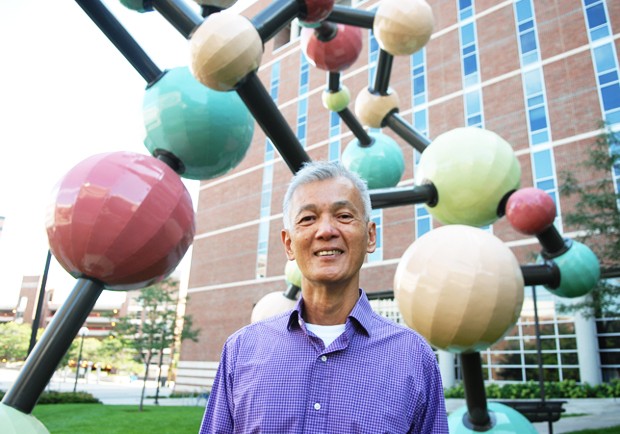University of Minnesota chemistry professor Lawrence Que âÄôs work with enzymes could lead to better understanding of the processes in the body that result in cancer. QueâÄôs deals with nonheme iron enzymes. These enzymes are involved in the process that tells cells to divide and grow. Many critical signals for cell growth are carried out by iron enzymes interacting with oxygen, he said. âÄúCancer is growth unchecked,âÄù Que said. If scientists can learn how this system works, they could use drugs to affect how the enzymes work in cancer cells, Que said. âÄúThis is one where we could make a difference,âÄù he said. The research is only in the beginning stages, however. The enzymes themselves have to be understood first, Que said. He purifies the enzymes and studies the kinds of amino acids that are involved, as well as the roles that oxygen plays. Que studies enzymes through various types of radiation like X-rays and ultraviolet light. In the lab, he uses the different kinds of light to observe the molecular structures of iron and oxygen. These frequencies show Que the different aspects of an enzymeâÄôs structure and how it interacts with iron. He also creates chemical models, which help him study reactions and test his ideas on a larger level. âÄúWe make models of what we think enzymes and iron look like,âÄù he said. When Que began his career, nonheme enzymes had not been studied very much. Que has spent the last 30 years of his life trying to learn more about them. Through his research, he hopes to figure out âÄúhow nature does chemistry,âÄù he said. William Tolman , who is also a chemistry professor at the University, has been colleagues with Lawrence for many years. The two have collaborated often and published a number of articles together. âÄúHeâÄôs a leader in the field of bioinorganic chemistry,âÄù Tolman said. Tolman said the University is a world leader in this field because of Que, who has been involved on a national and international level. âÄúHeâÄôs really done a lot to not just get the field going forward, but also the University going forward,âÄù said Valerie Pierre , an assistant professor in the chemistry department. Pierre said Que motivated her to work at the University and has been a mentor since her arrival. âÄúAs a scientist he has a stellar reputation, but also as a very friendly, amiable, helpful person,âÄù she said. âÄúHeâÄôs very much known as this type of personality in the bioinorganic world.âÄù Que first began experimenting at age 10 when a high school teacher gave him chemistry supplies. Since then, Que has continued to experiment. This year will be the 27th year that Que has taught at the University. He first came here 40 years ago as a graduate student. Throughout his life, Que has moved back to Minnesota three times. âÄúNow IâÄôm here to stay,âÄù he said.

Image by Jason Kopp
University of Minnesota professor Lawrence Que is researching an iron-containing enzyme called “nonheme iron”.
Chemistry professor hopes to make a difference with enzymes
Enzymes could help in cancer treatment.
Published September 28, 2009
0

